.jpg) With thanks to my good friends Joanne Harris and Hazel Lee who both live in full colour — and have helped inspire this sensory journey.
With thanks to my good friends Joanne Harris and Hazel Lee who both live in full colour — and have helped inspire this sensory journey.
We often describe fine chocolate — like wine, olive oil, or even perfume — using colours.
“She said it tasted green.”
“He thought it smelled red.”
“That bar had the warmth of orange, the mystery of purple, the depth of brown.”
But what do we really mean?
Welcome to the flavour-colour language of chocolate — a way to tune your senses, train your palate, and explore the full sensory experience of chocolate tasting. It’s part science, part poetry — and completely delicious.
Let’s step into the spectrum…
Green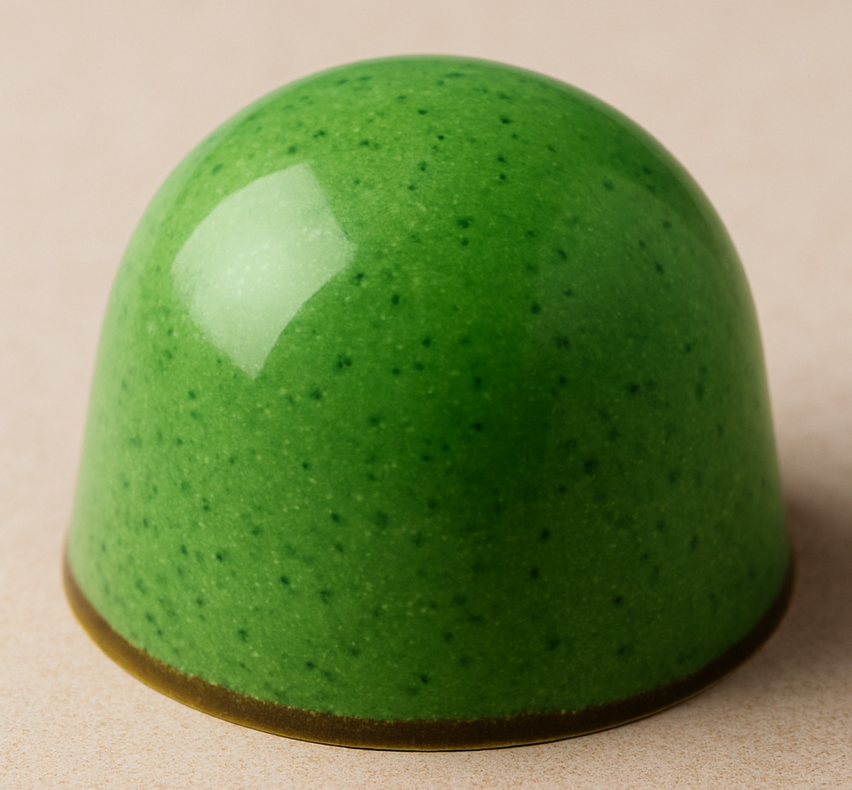
(Vegetal & Fresh Flavours in Chocolate)
Descriptors: Fresh, sharp, grassy, leafy, tomato vine
Green evokes the scent of just-snapped beans, broken tomato vines, and cut grass. In chocolate, green notes often come from underfermented beans, light roasting, or high-ester fermentation, bringing everything from pea-pod brightness to raw, leafy funk.
Common Aroma Compounds:
cis-3-Hexenol: Fresh-cut grass
trans-2-Hexenal: Sharp, green, leafy
Isobutyl Methoxypyrazine: Green bell pepper
cis-3-Hexenyl Acetate: Green apple
Chocolate Origins: Often found in youthful, underfermented beans — particularly from newer fermentation practices or experimental origins.
Chef’s Tip: Sniff fresh basil, mint, snapped beans, or underripe mango — then taste a chocolate bar with “green” notes. You’ll see the connection instantly.
Red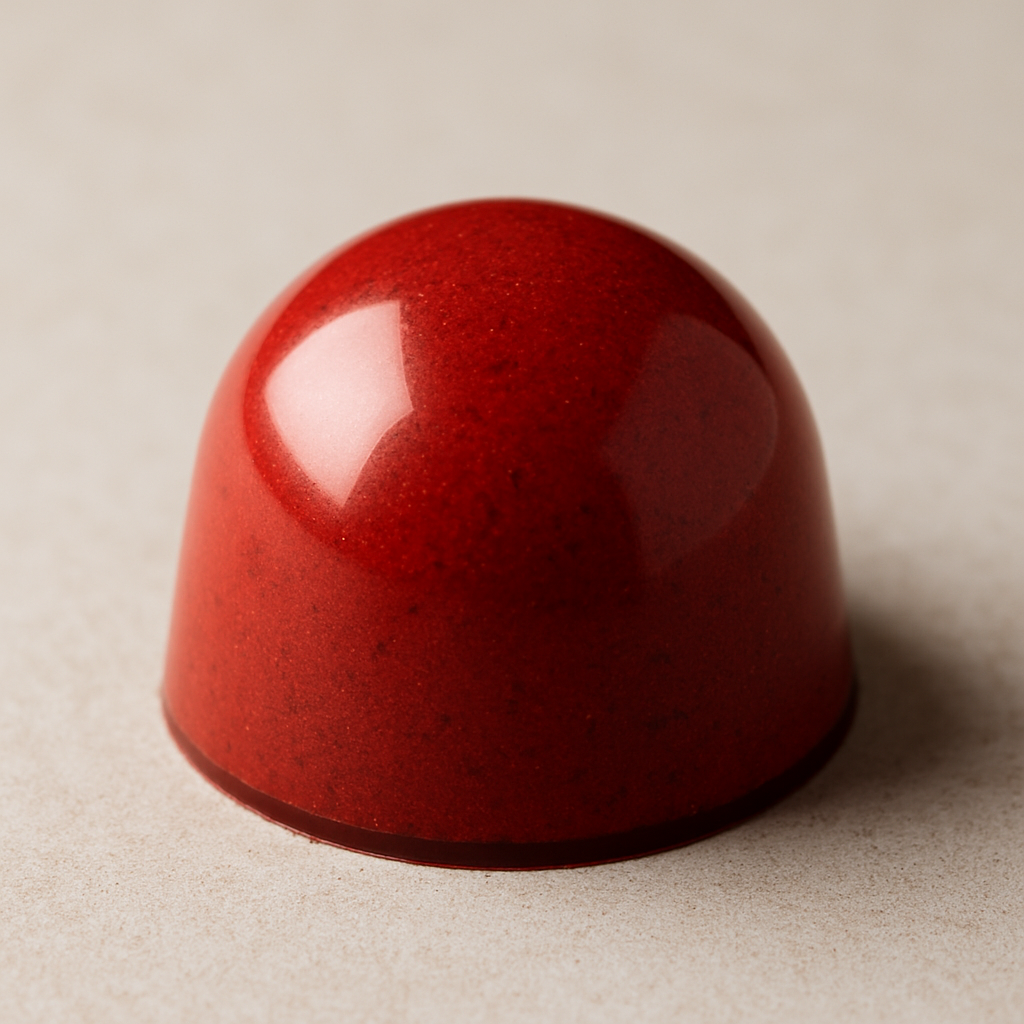
(Berry, Floral & Jammy Chocolate Notes)
Descriptors: Raspberry, cherry, rose, sweet-spice, Turkish delight
Red is romantic. It’s the flavour of fruit jams, berries, red wine, and rose petals — sweet yet bold, syrupy yet floral.
Common Aroma Compounds:
Ethyl butyrate: Red berries
Benzaldehyde: Cherry & almond
Damascenone: Rose, plum, Turkish delight
Phenylethyl alcohol: Floral rose
Furfural: Caramel, toasted cherrywood
Chocolate Origins: Red notes frequently show up in Criollo or Trinitario beans, especially from Madagascar and Venezuela, with warm fermentations and careful roasting.
Chef’s Tip: Pair red-fruit-forward chocolate with raspberries, cherry jam, and rosewater. The synergy will sing.
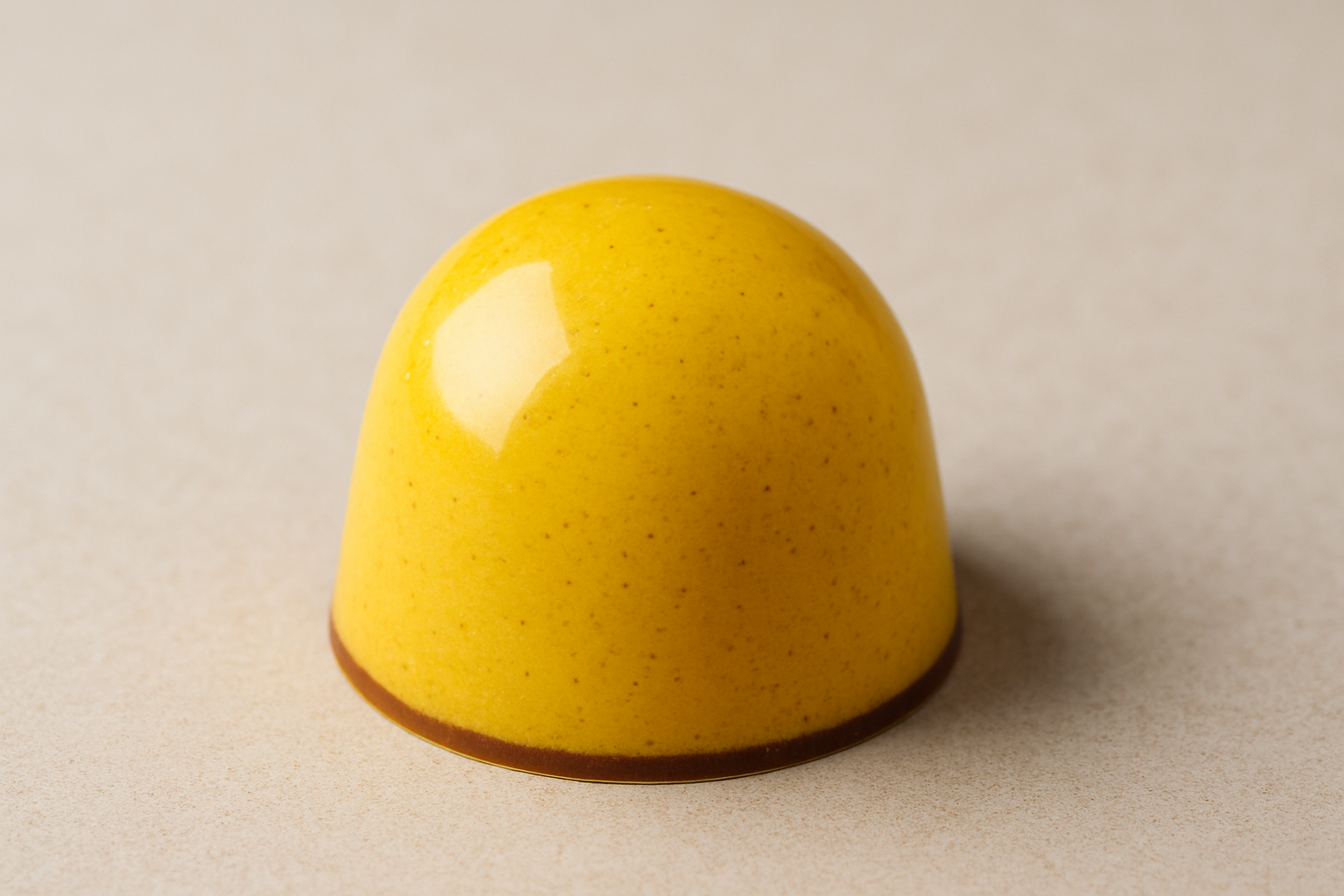 Yellow
Yellow
(Tropical, Creamy & Zingy Chocolate Aromas)
Descriptors: Banana, custard, lemon zest, ginger, turmeric
Yellow is bright and tropical but also creamy and comforting. It’s often overlooked in flavour profiling — but it holds immense power in chocolate.
Common Aroma Compounds:
Limonene: Lemon peel
Gamma-octalactone: Coconut, custard
Isoamyl acetate: Banana
Zingerone: Cooked ginger
Curcumi: Earthy turmeric
Chocolate Origins: Found in fruity cacao profiles from Ghana, Indonesia, or white chocolate with citrus or ginger infusions.
Chef’s Tip: Taste ripe banana, turmeric root, and a spoonful of custard next to dark chocolate. Yellow will suddenly leap out of the bar.
Orange
(Citrus & Spiced Chocolate Flavours)
Descriptors: Orange zest, marmalade, roasted squash, clove
Orange is the sunlit bridge between citrus brightness and spicy warmth.
Common Aroma Compounds:
Limonene + Myrcene: Zesty mandarin
Octanal/Nonanal: Citrus peel oils
Eugenol: Clove, nutmeg
Beta-ionone: Earthy florals
Maltol: Toasted caramel
Chocolate Origins: Common in inclusion bars with orange peel, spices, or floral infusions. Ugandan and Venezuelan cacao shine here.
Chef’s Tip: Build a sensory board — orange peel, marmalade, roasted sweet potato, clove, and chocolate. Taste them side-by-side. Orange becomes unmistakable.
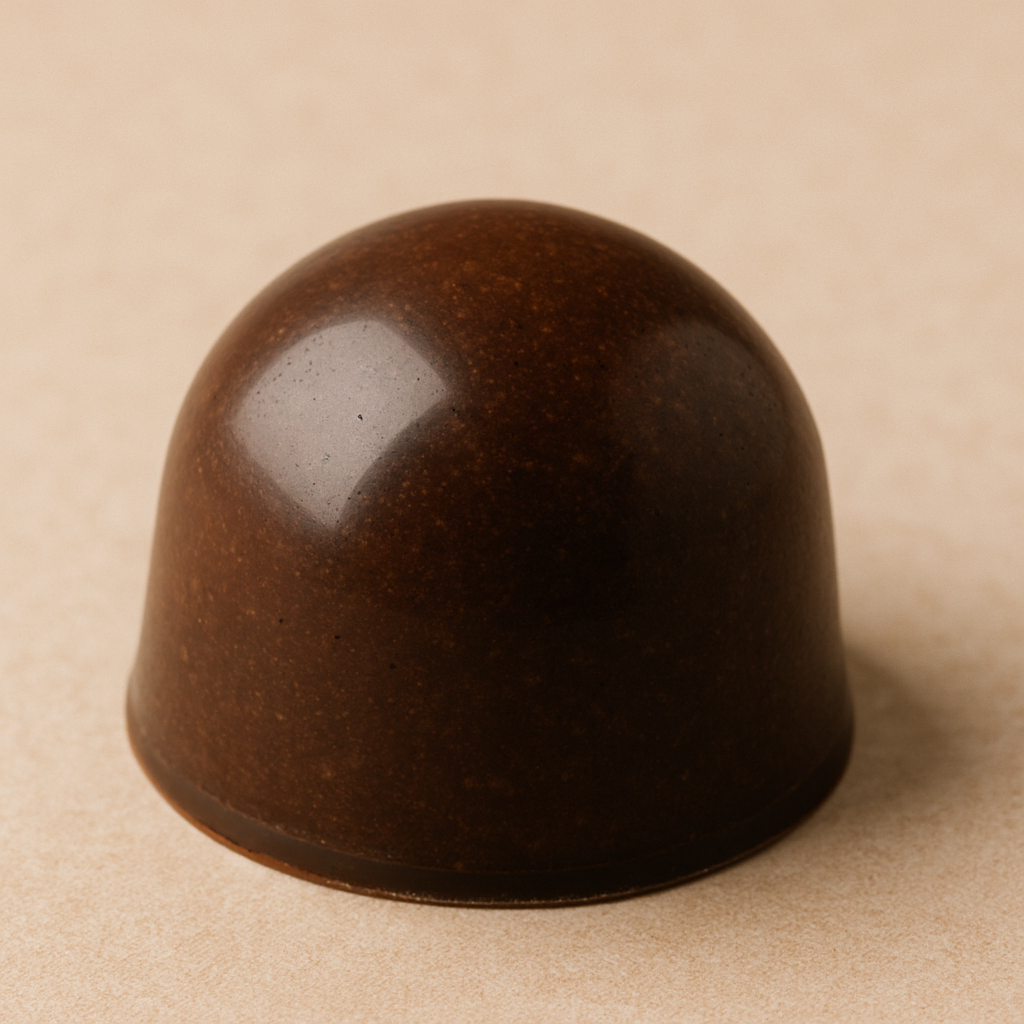 Brown
Brown
(Toasty, Earthy & Deep Cocoa Notes)
Descriptors: Roasted nuts, coffee, rye toast, pipe tobacco, molasses
Brown is the flavour foundation of chocolate — but it’s far from boring. Think earth, warmth, depth, and darkness.
Common Aroma Compounds:
Diacetyl: Buttered toast
2,5-Dimethylpyrazine: Toasted nuts
Furfural: Caramel, almond skin
Guaiacol: Smoke, spice
Geosmin: Damp earth, beetroot
Chocolate Origins: Dominant in well-roasted *West African cacao*, aged Trinitarios, and bars using a deep Maillard profile.
Chef’s Tip: Train your nose with roasted nuts, coffee beans, and molasses. Then revisit your favourite dark bar — you’ll taste a whole new layer of brown.
Purple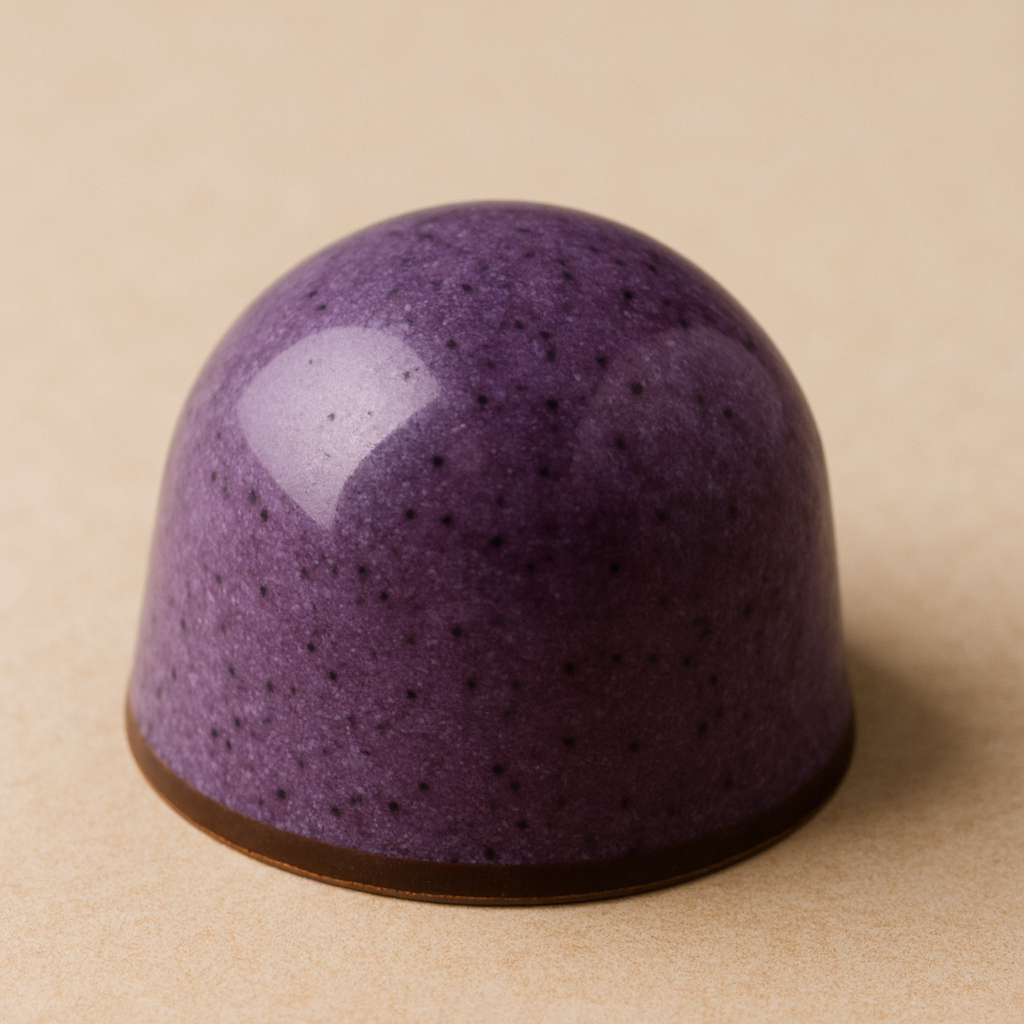
(Dusky, Fermented & Floral Chocolate Tones)
Descriptors: Violet, fig, prune, aged wine, blackcurrant jam
Purple is mysterious. It smells like twilight — sweet yet dark, floral yet fermented.
Common Aroma Compounds:
Beta-ionone: Violet petals
2-Phenylethanol: Rose & honey
Ethyl 2-methylbutyrate: Blackberry
Methyl anthranilate: Grape candy
Ethyl lactate: Fermentation funk
Chocolate Origins: Prominent in long-ferment beans, Nacional varieties, and bars from Peru and Ecuador with complex floral-fruit profiles.
Chef’s Tip: Taste violet pastilles, figs, and dark chocolate together — purple isn’t just a colour; it’s an emotion.
Ask Better, Taste Brighter
When someone says a chocolate “tastes green” or “smells red”, don’t dismiss it.
Ask: What kind of green? What kind of red?
Because every colour holds a spectrum — and every flavour tells a story.
The more we train our senses, the more chocolate reveals itself — not just as a treat, but as a canvas of multisensory flavour.
